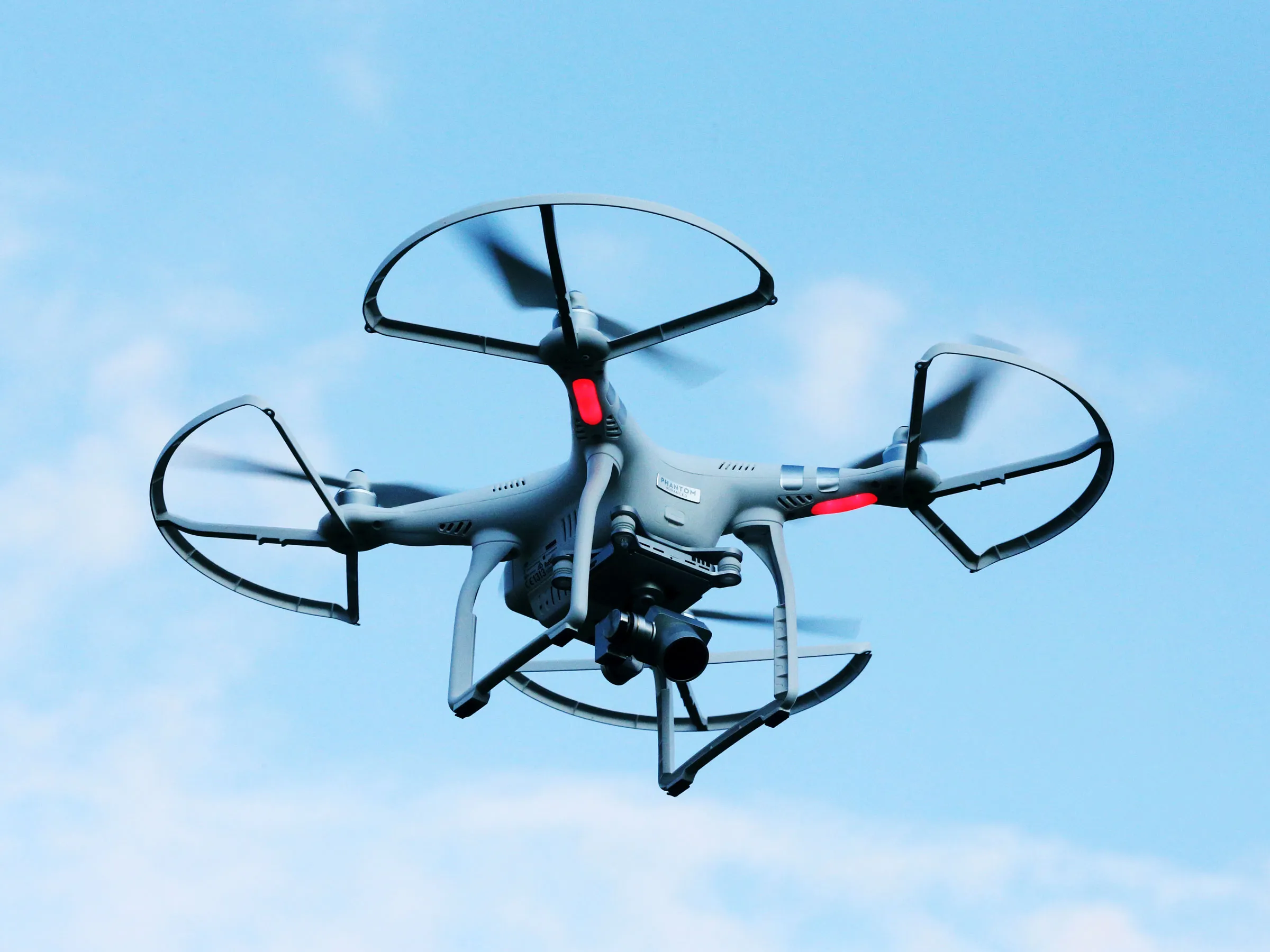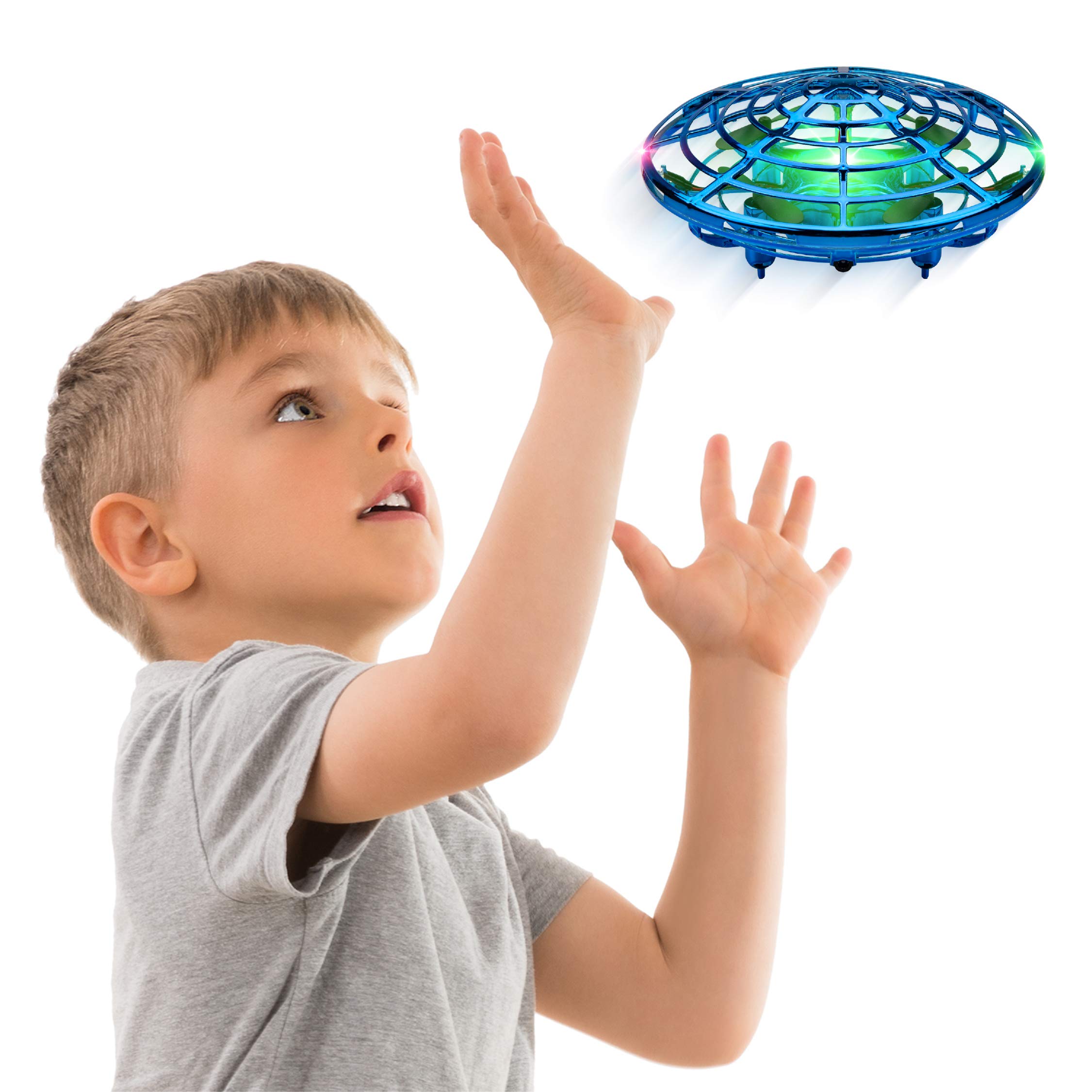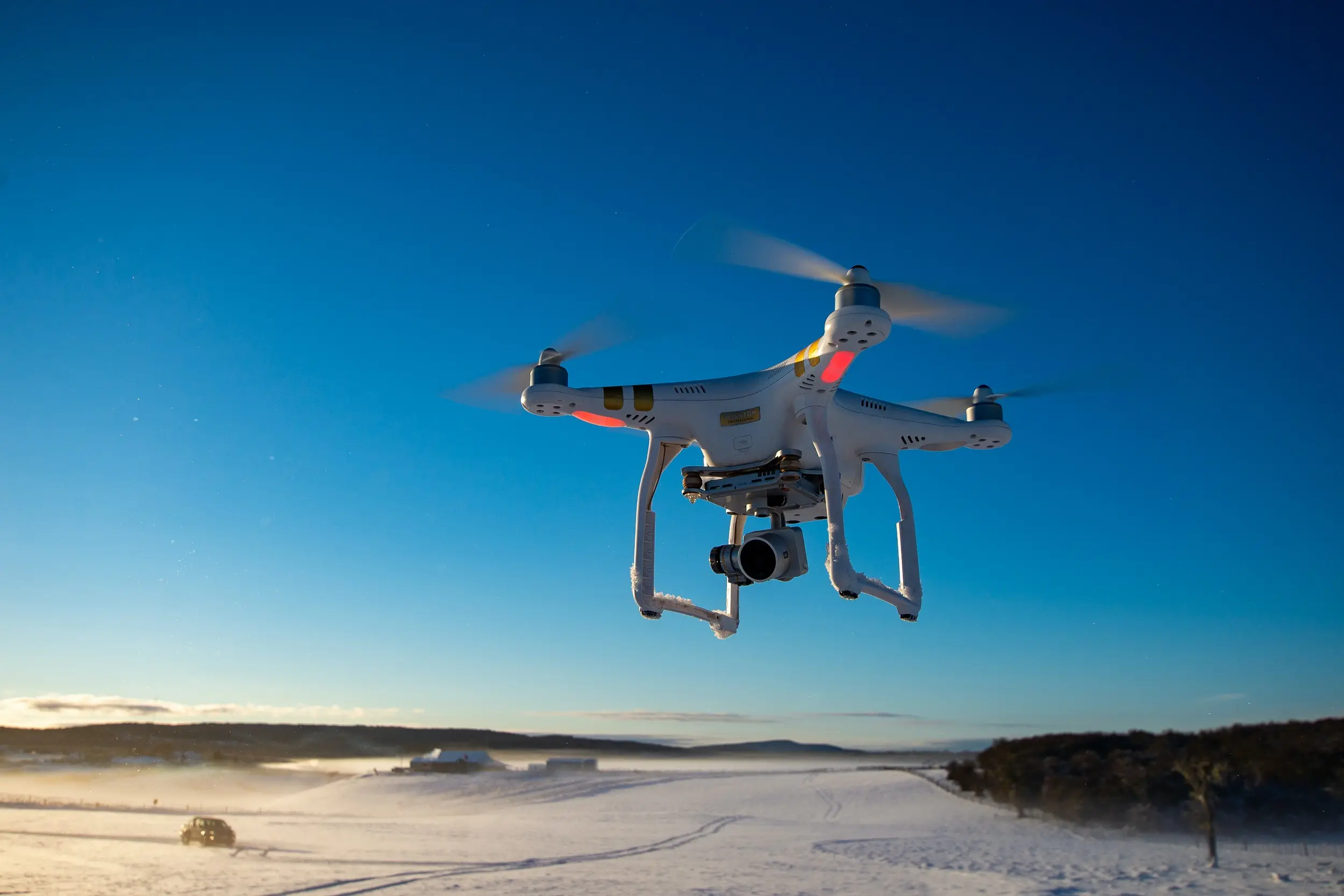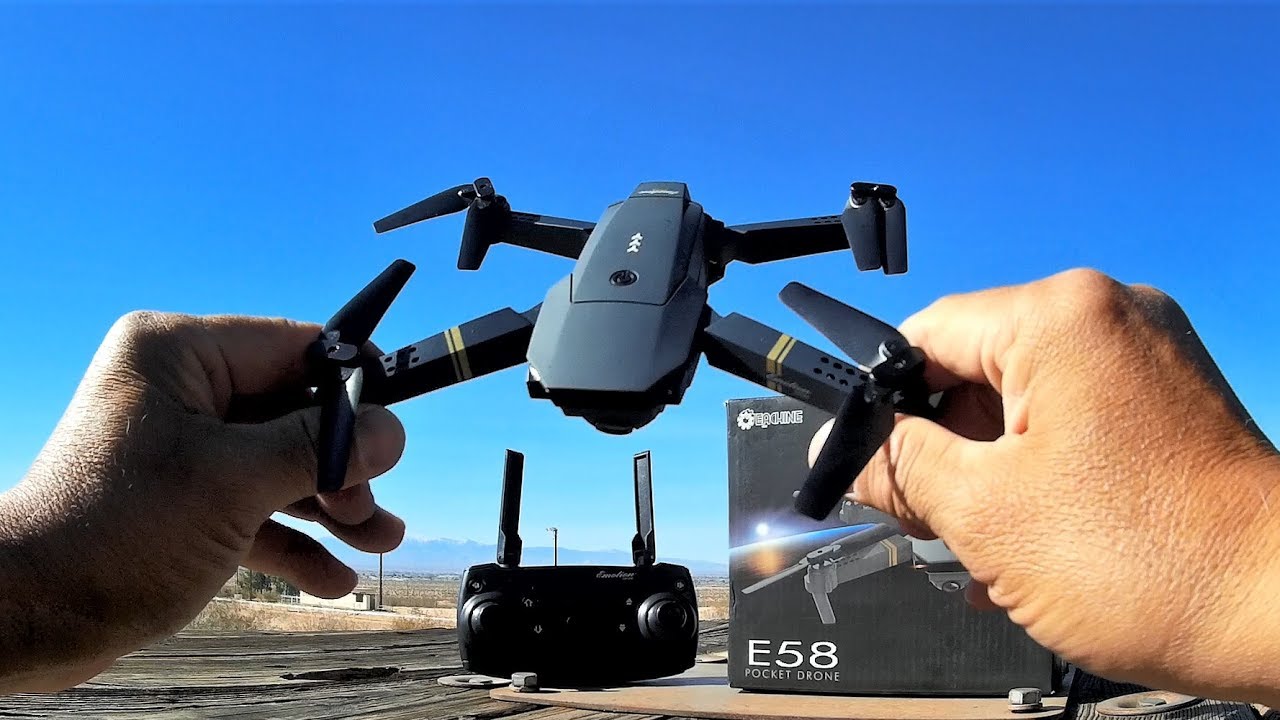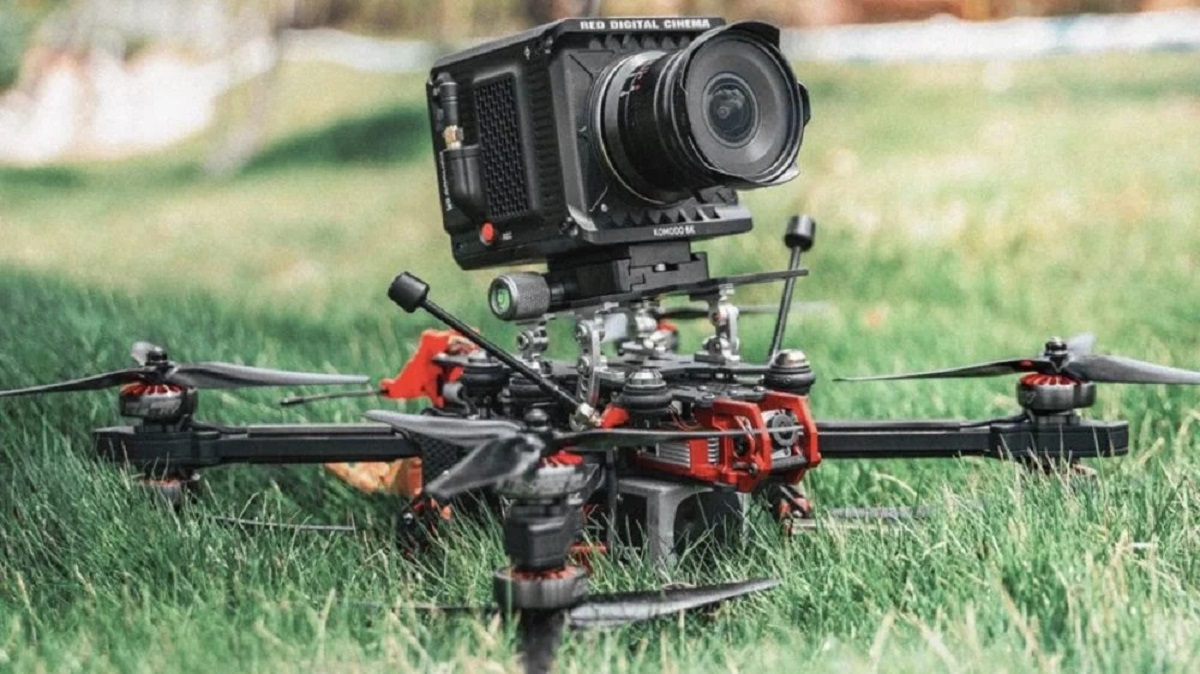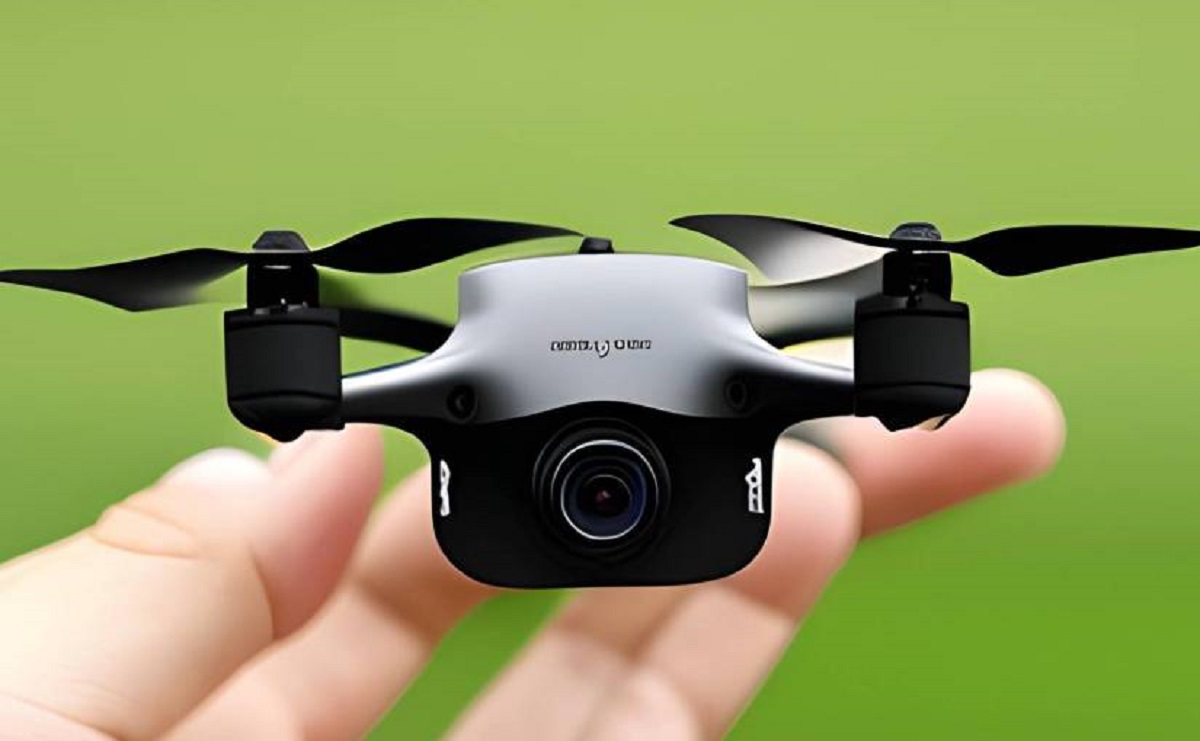Introduction
Drones have become increasingly popular in recent years, revolutionizing industries ranging from photography and videography to delivery and surveillance. These unmanned aerial vehicles (UAVs) offer a new perspective and endless possibilities. But have you ever wondered how these drones achieve flight and navigate through the skies?
In this article, we will explore the fascinating world of drone flight. We will delve into the components that make up a drone, the mechanisms behind their flight, the control systems that enable their maneuverability, as well as the different types of drone flight. Additionally, we will touch upon the factors that can affect drone flight and the regulations and safety guidelines that must be followed.
Whether you are a drone enthusiast, a beginner looking to learn more, or simply curious about the technology behind these aerial marvels, this article will provide you with the insights you seek.
So, fasten your seat belts and get ready for takeoff as we unravel the secrets of how drones defy gravity and soar through the sky!
Components of a Drone
To understand how a drone achieves flight, it is important to first familiarize ourselves with its key components. A drone is a complex blend of hardware and software, carefully designed to work in perfect harmony. Let’s take a closer look at some of the main components:
- Frame: The frame serves as the skeleton of the drone, providing structural integrity and durability. Typically made from lightweight materials such as carbon fiber or plastic, the frame provides a rigid platform to mount the other components.
- Propellers: Propellers, also known as rotors or blades, are responsible for generating the thrust needed to lift the drone off the ground and maneuver it in the air. Modern drones usually have four or more propellers that spin rapidly in opposite directions, creating a balanced lift.
- Motor: The motor converts electrical energy from the drone’s battery into mechanical power to drive the propellers. Motors are typically brushless to increase efficiency and reduce maintenance.
- Electronic Speed Controller (ESC): The ESC serves as the intermediary between the flight controller and the motor. It regulates the power supply to the motor, ensuring precise control of speed and direction.
- Flight Controller: The flight controller acts as the brain of the drone, processing data from various sensors and providing instructions to the ESCs. It utilizes an array of gyroscopes, accelerometers, and magnetometers to keep the drone stable and responsive to user commands.
- Battery: Drones are powered by rechargeable lithium-polymer (LiPo) batteries, which provide the necessary electrical energy to fly. The battery’s capacity and voltage rating directly impact the drone’s flight time and performance.
- Camera and Gimbal: Many drones are equipped with cameras to capture breathtaking aerial images and videos. A gimbal is used to stabilize the camera, reducing any unwanted vibrations or movements during flight.
- Remote Control: The remote control, also known as the transmitter, allows the operator to wirelessly communicate with the drone. It provides control inputs through joysticks, switches, or buttons, enabling flight maneuvers and camera operations.
These are just some of the essential components that make up a drone. Each component works in synchronization to ensure smooth and stable flight. As technology continues to advance, we can expect further improvements and innovations in drone design and functionality.
How Drones Achieve Flight
Have you ever wondered how a drone is able to achieve flight and stay airborne? The science behind drone flight is an intricate balance of aerodynamics, propulsive forces, and flight control systems. Let’s explore the key principles that allow drones to defy gravity:
Lift: Lift is the upward force that counteracts the weight of the drone, allowing it to stay airborne. Drones generate lift through their propellers, which create thrust by rapidly spinning and pushing air downwards. According to Newton’s third law of motion, for every action, there is an equal and opposite reaction. As the propellers push air downwards, an upward force is generated, lifting the drone off the ground.
Thrust: Thrust is the force that propels the drone forward and enables it to change direction. The propellers generate thrust by creating a pressure difference between their upper and lower surfaces as they spin. This pressure difference creates a forward force, allowing the drone to move through the air.
Drag: Drag refers to the resistance that opposes the motion of the drone through the air. It is caused by factors such as air friction and the shape of the drone’s body. Minimizing drag is crucial for optimizing flight efficiency and extending the drone’s battery life.
Gravity: Gravity is the downward force that pulls the drone towards the Earth. The drone’s weight is offset by the lift generated by the propellers, allowing it to maintain a stable hover or ascend/descend as desired.
Flight Control Systems: Drones rely on sophisticated flight control systems to maintain stability and control their movements. These systems utilize a combination of sensors, such as gyroscopes, accelerometers, and magnetometers, to measure the drone’s orientation and motion. The flight controller processes this data and adjusts the speed of the motors to maintain stability and respond to user inputs.
By harnessing these principles and utilizing advanced flight control systems, drones are able to achieve flight and execute precise maneuvers with remarkable agility. The ability to navigate through the air has opened up a world of possibilities for various applications and industries.
Now that we have explored how drones achieve flight, let’s delve deeper into the control systems that enable their maneuverability.
Drone Control Systems
Drone control systems play a crucial role in enabling the maneuverability and responsiveness of these aerial vehicles. These systems utilize a combination of hardware and software to interpret user inputs and translate them into precise flight commands. Let’s take a closer look at the key components of drone control systems:
Remote Control: The remote control, or transmitter, is the primary interface between the operator and the drone. It allows the pilot to transmit commands wirelessly to the drone, controlling its flight, camera movements, and other functionalities. The remote control typically consists of joysticks, switches, buttons, and a display screen to provide real-time feedback.
Flight Controller: The flight controller acts as the “brain” of the drone, processing inputs from the remote control and various sensors to control the flight and stability of the drone. It utilizes data from accelerometers, gyroscopes, magnetometers, and GPS modules to determine the drone’s position, orientation, and altitude. The flight controller adjusts the speed of individual motors, enabling precise control of the drone’s movements.
GPS Module: Many drones are equipped with a Global Positioning System (GPS) module, which provides accurate positioning and navigation data. GPS allows the drone to maintain its position, fly on a predefined path, or perform autonomous flight functions such as waypoint navigation or return-to-home operations.
Telemetry System: The telemetry system is responsible for providing real-time data and feedback from the drone to the operator. This includes information such as battery voltage, flight speed, altitude, and other important flight parameters. Telemetry systems can be integrated into the remote control or transmitted via a separate telemetry module.
Electronic Speed Controllers (ESCs): The ESCs regulate the power supplied to each motor based on the commands received from the flight controller. By adjusting the speed of the motors, the drone can perform maneuvers such as ascending, descending, rotating, or moving in various directions.
Additionally, advanced drones may incorporate additional features such as obstacle avoidance systems, object tracking, and image stabilization. These features enhance the drone’s safety, ease of use, and overall flight experience.
With the integration of these control systems, drones have become more accessible and user-friendly. Pilots can navigate their drones with precision and confidence, even in complex environments. The continuous advancements in drone control technology pave the way for exciting possibilities and applications in various industries.
Now that we understand the control systems of a drone, let us explore the different types of drone flight.
Types of Drone Flight
Drones are incredibly versatile and can be flown in a variety of ways, each serving a unique purpose. Whether you are an aerial photographer, a racing enthusiast, or a professional surveyor, there is a type of drone flight that suits your needs. Let’s explore some of the most common types of drone flight:
Hovering: Hovering is the simplest and most common type of drone flight. In this mode, the drone remains stationary in the air, maintaining a fixed position and altitude. This is ideal for capturing stable aerial images and videos or conducting detailed inspections in a particular area.
Straight Line Flight: Straight line flight involves flying the drone in a straight path from point A to point B. This type of flight is useful for capturing footage of a linear feature, such as a road, river, or railway, or for surveying a specific area along a predetermined course.
Circular Flight: In circular flight, the drone orbits around a central point or object, creating panoramic shots or capturing 360-degree videos. This type of flight is commonly used in cinematography and real estate photography to showcase properties or highlight specific points of interest.
Waypoint Navigation: Waypoint navigation allows drones to autonomously follow a predefined flight path. Pilots can use ground control software or mobile applications to map out a route consisting of specific GPS coordinates. This type of flight is especially useful for aerial mapping, site inspections, or conducting aerial surveys.
FPV (First-Person View) Flight: FPV flight involves flying the drone while wearing goggles or using a screen that provides a live video feed from the drone’s onboard camera. Pilots can experience a real-time, immersive perspective, as if they were sitting inside the drone. FPV flight is popular within the racing and freestyle drone community, adding an exhilarating and dynamic element to the flying experience.
Autonomous Flight: Autonomous flight refers to the ability of a drone to fly and perform tasks without direct pilot control. This advanced feature allows drones to execute complex missions, such as search and rescue operations, monitoring large areas, or delivering goods. Autonomous flight relies on sophisticated algorithms, sensor technology, and GPS integration.
These are just a few examples of the different types of drone flight. With the advent of new technologies and features, the possibilities for aerial exploration and creativity are boundless.
Now that we have a better understanding of the types of drone flight, let’s explore some of the factors that can affect a drone’s performance in the air.
Factors Affecting Drone Flight
While drones are capable of impressive flight capabilities, there are several factors that can impact their performance and overall flight experience. Understanding these factors is essential for safe and successful drone operations. Let’s explore some of the key factors affecting drone flight:
Weather Conditions: Weather conditions play a crucial role in drone flight. High winds, rain, snow, or extreme temperatures can affect the stability and control of a drone. Strong gusts of wind may impede the drone’s ability to maintain its position or cause it to drift off course. It is crucial to check weather conditions before flying and avoid adverse weather situations.
Battery Life: The battery life of a drone determines how long it can remain airborne. Flight time depends on factors such as battery capacity, drone weight, and flying conditions. It is essential to monitor battery levels and plan flight missions accordingly, ensuring a safe return to home or landing before the battery is depleted.
Obstacles and Interference: Drones need clear airspace to fly safely. Obstacles such as trees, buildings, or power lines pose a significant risk and can cause collisions. Additionally, interference from other electronic devices or radio signals can disrupt the drone’s control systems. It is important to survey the flight area, maintain visual line-of-sight, and avoid areas with potential interference.
Flight Range and Signal Strength: Drones rely on a strong and stable signal connection between the remote control and the drone. The range and signal strength can be influenced by environmental factors such as distance, obstacles, and electromagnetic interference. Pilots should be aware of the drone’s maximum range and maintain a strong signal connection to ensure proper control throughout the flight.
Regulations and Airspace Restrictions: Drone operations are subject to regulations and airspace restrictions enforced by aviation authorities and local governing bodies. Pilots must be familiar with and adhere to these regulations to ensure safe and legal operations. It is important to obtain any required permits or authorizations and be aware of no-fly zones or restricted areas.
Drone Maintenance: Regular maintenance and inspection of the drone are crucial for safe and reliable flight. Checking for wear and tear, ensuring propellers are properly secured, maintaining clean and functional sensors, and updating firmware are among the important tasks to keep the drone in optimal working condition.
By taking these factors into account and implementing proper safety precautions, drone pilots can mitigate risks and enjoy smoother, more successful flights. Adhering to best practices and being mindful of the operating environment create a safer and more rewarding drone flying experience.
Now that we have discussed the factors affecting drone flight, let’s explore the regulations and safety guidelines that drone operators must adhere to.
Drone Flight Regulations and Safety Guidelines
As the popularity of drones continues to grow, governments and aviation authorities have implemented regulations and safety guidelines to ensure safe and responsible drone operations. These regulations aim to protect airspace, privacy, and public safety. If you are planning to fly a drone, it is essential to understand and comply with the following regulations and guidelines:
Registering Your Drone: Depending on your country or region, you may be required to register your drone with the appropriate authorities. Registering helps ensure accountability and allows authorities to identify the owner in case of any incidents or violations.
Respecting No-Fly Zones and Restricted Areas: No-fly zones and restricted areas are designated locations where drones are prohibited or have specific limitations. These areas may include airports, government buildings, military installations, and crowded or sensitive areas. It is crucial to familiarize yourself with the local regulations and respect these restrictions to avoid legal consequences and ensure public safety.
Maintaining Visual Line-of-Sight: In most countries, drone pilots are required to maintain visual line-of-sight with their drones during flight. This means keeping the drone within your sight at all times, without the use of binoculars or other devices. It allows you to anticipate and avoid obstacles and other aircraft, ensuring safe and controlled flight.
Flying at Safe Altitudes: Flying at a safe altitude is important to avoid conflicts with manned aircraft. Depending on the country, there may be specific altitude restrictions for drone operations. It is crucial to adhere to these restrictions, especially near airports or other areas with high air traffic.
Respecting Privacy: When operating a drone, it is essential to respect the privacy of others. Avoid flying over private property or capturing images or videos without the consent of individuals present. Be mindful of the boundaries and the potential impact on people’s privacy rights.
Understanding Local Laws and Regulations: Different countries and regions may have specific laws and regulations governing drone operations. It is important to familiarize yourself with these laws and comply with them. Stay updated on any changes or updates to ensure that your drone flights remain legal and safe.
Obtaining Permissions or Authorizations: In certain situations, you may need to obtain permissions or authorizations to fly your drone. This could include commercial operations, flying in restricted airspace, or conducting flights beyond visual line-of-sight. Make sure to follow the necessary procedures and obtain the required permits to ensure compliance.
By following these regulations and safety guidelines, you can enjoy the exciting world of drone flying while promoting safety, privacy, and responsible drone operations. Always prioritize the well-being of others, respect local regulations, and fly with caution.
Now that we have explored the regulations and safety guidelines, let’s summarize the key points we have covered throughout this article.
Conclusion
Throughout this article, we have delved into the fascinating world of drone flight. We have explored the essential components that make up a drone, including the frame, propellers, motor, flight controller, and more. Understanding these components helps us grasp the intricacies behind a drone’s ability to achieve flight.
We also examined the different types of drone flight, from hovering and straight line flight to circular flight, waypoint navigation, and FPV flight. Each type of flight offers unique possibilities for capturing stunning aerial images and videos, conducting surveys, or engaging in thrilling racing experiences.
Furthermore, we discussed the importance of drone control systems, including the remote control, flight controller, GPS module, and electronic speed controllers. These systems work together to provide precise control and stability, allowing pilots to navigate their drones with confidence.
Additionally, we explored the various factors that can affect drone flight, such as weather conditions, battery life, obstacles, and flight range. It is crucial for drone pilots to consider these factors to ensure safe and successful flights.
We also emphasized the significance of adhering to drone flight regulations and safety guidelines. By understanding and complying with local laws, registering drones as required, respecting no-fly zones and privacy, and maintaining visual line-of-sight, we can enjoy the rewards of drone flight while prioritizing safety and responsibility.
In conclusion, drones have revolutionized various industries and recreational activities, providing a whole new perspective and endless possibilities. Whether you are a professional photographer, videographer, surveyor, or simply a drone enthusiast, the ever-evolving technology behind drone flight continues to offer exciting opportunities for exploration, creativity, and innovation.
So, fasten your seat belts and take off into the skies as you embark on your own drone flight adventures, while keeping safety, responsibility, and respect at the forefront of your journey.







